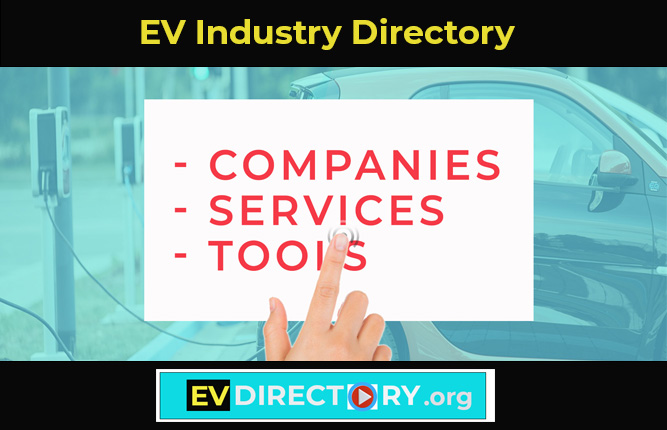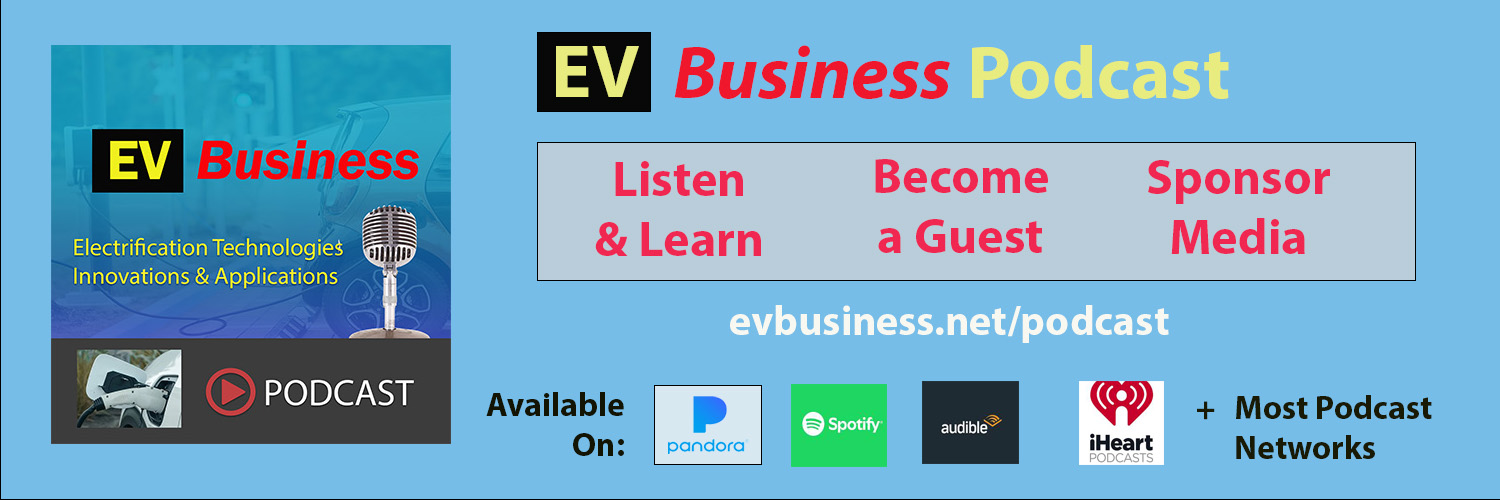EV Charging Network Operators are companies that provide account identification and access, charging management and billing services to public and/or private EV charging stations. Managing EV charging stations without the right tools can lead to inefficiencies, lost revenue, and poor user experiences. EV charging network operators solve these problems by enabling seamless infrastructure compatibility, user access control, flexible billing, and real-time charger monitoring. These platforms support OCPP standards, dynamic pricing, public/private access options, live usage data, and secure payment systems, all managed through an intuitive dashboard. Features like load balancing, V2G integration, driver support, branding, roaming, cybersecurity, and incentive management help station owners scale efficiently while meeting regulatory and customer expectations. Learning more about network operators is essential for anyone looking to run a reliable, revenue-generating EV charging business.
EV Charging Network Operator Companies

EV Charging Network Operator Companies List
ABB E-mobility – ABB E-mobility provides advanced EV charging solutions, including fast chargers and network management systems, for various applications worldwide.
Allego – Allego is a leading European provider of charging solutions, offering a comprehensive network of EV charging stations across multiple countries.
AMPECO – AMPECO offers a white-label EV charging platform for charge point operators and e-mobility service providers, featuring billing, user management, and analytics tools.
AmpUp – AmpUp offers a cloud-based EV charging management platform, enabling hosts to monitor, manage, and monetize their charging stations effectively.
Blink Charging – Blink Charging provides EV charging equipment and networked EV charging services globally, supporting various deployment configurations, including Level 2 and DC fast chargers.
Chargefox – Chargefox is Australia’s largest EV charging network, providing ultra-rapid charging stations powered by renewable energy across the country.
ChargePoint – ChargePoint operates one of the world’s largest EV charging networks, offering a comprehensive range of residential and commercial charging solutions.
Electrify America – Electrify America, a subsidiary of Volkswagen, offers a nationwide network of ultra-fast EV chargers, complemented by a user-friendly app for account management and payment processing.
eMotorWerks (JuiceBox) – eMotorWerks, a subsidiary of Enel X, offers the JuiceBox line of smart EV chargers, providing cloud-based control and integration with renewable energy sources.
EV Connect – EV Connect offers an open-platform EV charging network, enabling businesses and property owners to manage charging stations with advanced software solutions.
EV Gateway – EV Gateway provides a comprehensive EV charging platform, offering hardware-agnostic solutions for network management, billing, and driver support.
EVBox – EVBox is a leading global manufacturer of electric vehicle charging stations and charging management software, offering solutions for both residential and commercial use.
EVCS – EVCS operates a rapidly growing network of public EV charging stations on the U.S. West Coast, offering subscription-based charging and user account management.
EVgo – EVgo operates one of the largest public fast-charging networks for electric vehicles in the United States, providing convenient and reliable charging solutions.
Fastned – Specializes in fast EV charging stations.
Flo – FLO is a North American EV charging network operator, providing reliable charging solutions with a focus on network uptime and customer service.
Francis Energy – Francis Energy is building a comprehensive EV fast-charging network across the central United States, focusing on underserved rural areas.
Greenlots (Shell Recharge) – Greenlots, now operating under Shell Recharge, offers smart charging solutions and network management services for utilities, cities, and businesses.
GreenWay Infrastructure – GreenWay operates a network of EV charging stations across Central and Eastern Europe, offering reliable and accessible charging solutions.
Hypercharge Networks – Hypercharge Networks delivers smart EV charging solutions for residential, commercial, and fleet applications across North America.
Ionity – Ionity is a European high-power charging network, enabling long-distance travel across Europe with ultra-fast chargers.
OpConnect – OpConnect delivers EV charging solutions with a focus on secure access, real-time monitoring, and seamless payment processing for various stakeholders.
PowerFlex – PowerFlex specializes in intelligent EV charging solutions, integrating solar energy and load management to optimize energy usage and reduce costs.
Rivian Adventure Network (RAN) – Rivian’s Adventure Network is a proprietary fast-charging network designed to support Rivian vehicles, focusing on remote and adventure destinations across the U.S.
Shell Recharge Solutions – Shell Recharge Solutions provides integrated EV charging services for businesses and fleets, including hardware, software, and energy management.
Tesla Supercharger Network – Tesla operates a global network of over 50,000 Superchargers, offering high-speed charging exclusively for Tesla vehicles, with plans to expand access to other EVs.
Volta Charging – Volta Charging offers EV charging stations with integrated digital advertising screens, providing free charging services supported by advertising revenue.
Wallbox – Wallbox designs smart charging systems for homes and businesses, integrating energy management features for efficient EV charging.
Webasto – Webasto offers a variety of EV charging solutions, including home charging stations and commercial charging systems, focusing on user-friendly designs.
Xeal – Xeal offers smart EV charging infrastructure tailored for multifamily and commercial properties, emphasizing user-friendly access and energy efficiency.
EV Charging Network Operator Key Features and Capabilities
Access to Real-Time Session Data
Provides live data on charging session details such as energy delivered, duration, and cost. This allows both EV drivers and network operators to monitor charging activity, improve user experience, and detect abnormal charging behavior in real time.
Branding & User Experience
Offers custom branding options for charging screens, apps, and receipts, along with multilingual support and intuitive user interfaces. This is important for creating a seamless and recognizable experience for users, which enhances brand loyalty and user satisfaction.
Charger Location Services & Mapping Integration
Integrates station data with platforms like Google Maps, PlugShare, and Apple Maps, displaying real-time availability and precise charger locations. This ensures EV drivers can easily locate operational chargers and plan routes more efficiently.
Cybersecurity & Data Privacy
Implements strong encryption, secure authentication, and compliance with standards like GDPR, SOC 2, and ISO 27001. These measures are crucial for protecting user data, preventing unauthorized access, and maintaining trust in the charging network.
Custom Alerts & Notifications
Sends automatic alerts for events such as charging session start/stop, pricing changes, maintenance needs, or unauthorized use. Timely notifications help operators manage station reliability and allow users to stay informed and avoid disruptions.
Data & Reporting
Generates custom reports on energy use, session frequency, carbon offset, and revenue metrics, with support for sustainability reporting and API integration. This data is valuable for business intelligence, regulatory compliance, and optimizing station performance.
Driver Support Services
Provides 24/7 customer assistance via chat, phone, or in-app support in multiple languages. Fast, accessible support improves user trust and reduces downtime caused by user errors or equipment issues.
Dynamic Pricing Capabilities
Enables flexible pricing models that adjust based on time-of-day, demand, electricity costs, or user type. This feature helps operators maximize revenue, incentivize off-peak usage, and align with energy market rates.
Energy Source Transparency
Displays information on the source of energy used (e.g., solar, wind, grid mix) and estimated carbon savings. Promoting energy transparency appeals to environmentally conscious users and supports sustainability goals.
Incentives & Support Programs
Includes guidance on applying for federal, state, and utility funding programs like NEVI and CALeVIP, along with permitting and rebate support. Access to incentives reduces deployment costs and accelerates infrastructure expansion.
Maintenance & Uptime Guarantee
Ensures station availability through service-level agreements (SLAs), 24/7 monitoring, and field service dispatch for repairs. Reliable uptime is critical for public trust, driver satisfaction, and return on investment.
Multiple Authentication Methods
Allows users to access stations via RFID cards, QR codes, mobile apps, license plate recognition, or Bluetooth. Multiple methods provide convenience, accommodate diverse users, and improve accessibility.
Network Compatibility
Supports open standards like OCPP and works with multiple charger manufacturers and software systems. Compatibility promotes interoperability, simplifies network expansion, and prevents vendor lock-in.
Network Management Dashboard
Offers real-time visibility into station health, usage analytics, and the ability to remotely start, stop, or troubleshoot chargers. A centralized dashboard streamlines operations and reduces maintenance costs.
Payment & Billing System
Integrates secure payment processing for credit cards, mobile wallets, and network accounts with customizable pricing options. A robust billing system is essential for monetizing charging services and managing revenue.
Public vs. Private Network Flexibility
Provides options to configure chargers as public access or restricted use (e.g., fleet, residential, or workplace). Flexibility allows site hosts to control access based on their operational or community needs.
Real-Time Telematics & Diagnostics
Transmits live operational data and fault codes from chargers to the network platform for proactive maintenance. Real-time diagnostics enable faster troubleshooting and help prevent equipment failures.
Roaming & Network Partnerships
Enables drivers to use chargers across partner networks without separate accounts via roaming agreements (e.g., Hubject). Roaming expands user access and enhances the convenience of traveling between regions.
Scalability & Load Management
Supports multi-site deployments, dynamic load balancing, and energy management tools to optimize electricity usage. Scalability ensures the network can grow efficiently without exceeding infrastructure limits.
Support for Multiple Charging Levels
Accommodates both Level 2 (AC) and DC fast charging (Level 3), with options for speed adjustments based on user or site type. Supporting multiple charging levels ensures compatibility with a broader range of EVs and charging needs.
User Account Management
Provides drivers with personal dashboards to track usage, billing, and preferences, with guest access features. Strong account management enhances user control, engagement, and repeat usage.
V2G / Smart Grid Integration
Connects vehicles to smart grids for energy feedback (V2G), demand response, and utility coordination. This integration supports grid stability, lowers costs, and opens new revenue streams for EV owners and operators.
White Labeling & API Extensibility
Allows companies to customize apps, portals, and branding, with APIs for third-party integration. This flexibility is valuable for businesses, municipalities, or fleets that want to maintain a branded user experience or integrate EV data with other systems.
EV Charging Network Operator Glossary
Application Programming Interface (API) – A set of defined rules and protocols that allows different software systems (e.g., EV chargers, apps, or billing systems) to communicate and exchange data seamlessly.
Authentication, Authorization, and Accounting (AAA) – A framework used to identify users, grant permissions, and track usage data across EV charging networks.
Charging as a Service (CaaS) – A business model in which companies deploy and maintain EV charging infrastructure on behalf of property owners, who pay for usage or service over time.
Charging Point Operator (CPO) – An entity responsible for the installation, operation, and maintenance of EV charging stations, often managing the backend software and physical hardware.
Customer Relationship Management (CRM) – Software or tools used to manage customer interactions, often integrated with EV charging networks to track usage and support drivers.
Cybersecurity and Infrastructure Security Agency (CISA) – A U.S. government agency providing cybersecurity guidance for critical infrastructure, including EV charging systems.
Direct Current Fast Charging (DCFC) – A high-powered charging method that delivers DC electricity directly to the EV battery, significantly reducing charging time compared to Level 2 AC chargers.
Electric Vehicle (EV) – A vehicle powered entirely or partially by electricity from batteries or fuel cells, rather than internal combustion engines.
Electric Vehicle Charging Station Management System (EVCSMS) – A software platform that provides centralized control and monitoring of EV chargers across a network.
Electric Vehicle Supply Equipment (EVSE) – The infrastructure that supplies electric energy for the recharging of electric vehicles, typically including connectors, control systems, and network communication features.
Energy Management System (EMS) – A system that monitors, controls, and optimizes energy use in buildings or charging networks, often coordinating with EV charging load demands.
Geofencing – A location-based service that uses GPS or RFID to trigger an action when a device enters or exits a virtual boundary, useful for access control or dynamic pricing in EV charging.
Kilowatt-hour (kWh) – A unit of energy used to measure the amount of electricity consumed during EV charging or provided by a charging station.
Level 1 Charging – The slowest form of EV charging using a standard 120-volt household outlet; typically adds 3–5 miles of range per hour.
Level 2 Charging – A mid-range EV charging method using a 240-volt outlet that can provide 10–30 miles of range per hour, common in homes and public stations.
Load Balancing – The process of distributing available electrical power across multiple chargers to avoid overloading circuits while maximizing charging efficiency.
Media Oriented Systems Transport (MOST) – A high-speed multimedia and data communication protocol sometimes used in advanced EV charging systems, especially for in-vehicle diagnostics and media.
Mobile Application (App) – A smartphone or tablet application used by EV drivers to locate, start, and monitor charging sessions and manage user preferences.
Mobile Network Operator (MNO) – A company that provides cellular connectivity to EV chargers and networks, enabling remote access, updates, and data transmission.
National Electric Vehicle Infrastructure (NEVI) – A U.S. government program that provides funding for public EV charging infrastructure along major travel corridors.
Networked Charging Station – A smart EV charging station connected to the internet and a management platform for monitoring, control, billing, and data reporting.
Open Charge Point Interface (OCPI) – A protocol that enables data exchange between different EV charging networks for roaming, pricing, and station availability.
Open Charge Point Protocol (OCPP) – A standardized communication protocol between EV chargers and central systems that ensures interoperability and vendor flexibility.
Payment Gateway – A service that processes online and card-based transactions securely between the EV charging station and financial institutions.
Plug and Charge (PnC) – A feature enabled by the ISO 15118 standard that allows an EV to automatically authenticate and begin charging without the need for apps or RFID cards.
Radio Frequency Identification (RFID) – A wireless technology used for user authentication at EV charging stations via cards or tags.
Service Level Agreement (SLA) – A contract between the network service provider and site host outlining guaranteed uptime, maintenance response time, and support quality.
Smart Charging – A system that adjusts the timing and speed of EV charging based on grid conditions, energy pricing, or user preferences to optimize cost and grid impact.
Vehicle-to-Grid (V2G) – A bidirectional energy flow capability allowing EVs to send stored electricity back to the power grid to support demand response and energy balancing.
Vehicle-to-Infrastructure (V2I) – Communication between a vehicle and surrounding infrastructure (e.g., traffic lights, chargers) to optimize navigation, energy use, and safety.
Vehicle-to-Vehicle (V2V) – Communication between vehicles to exchange data such as speed, direction, or emergency alerts for safety and coordination.

